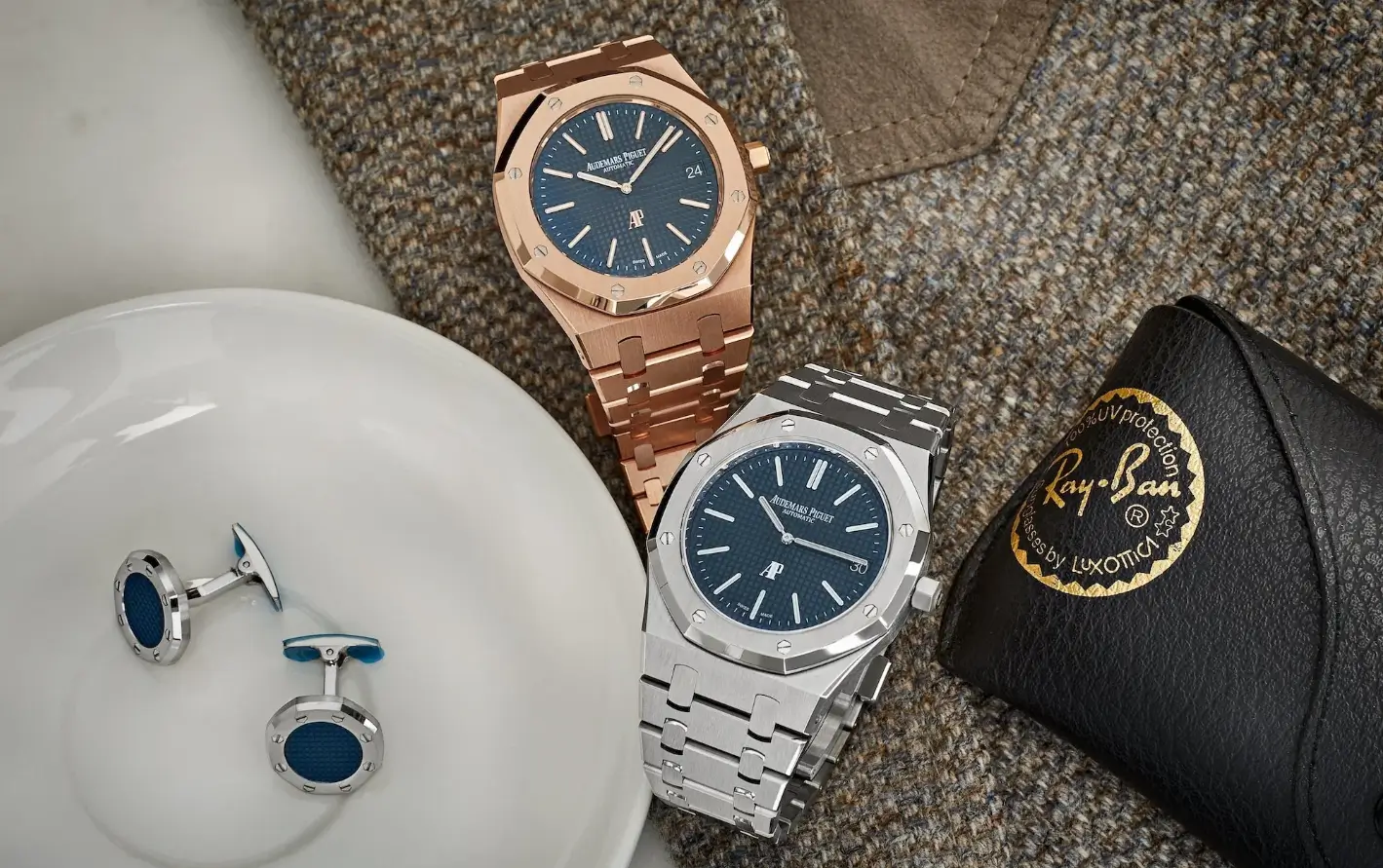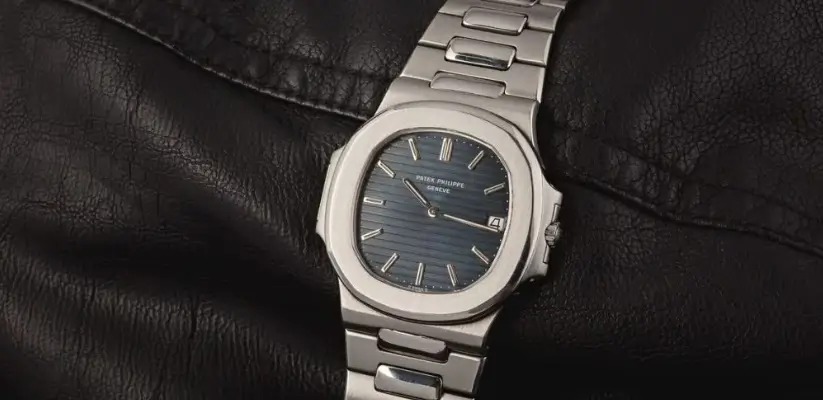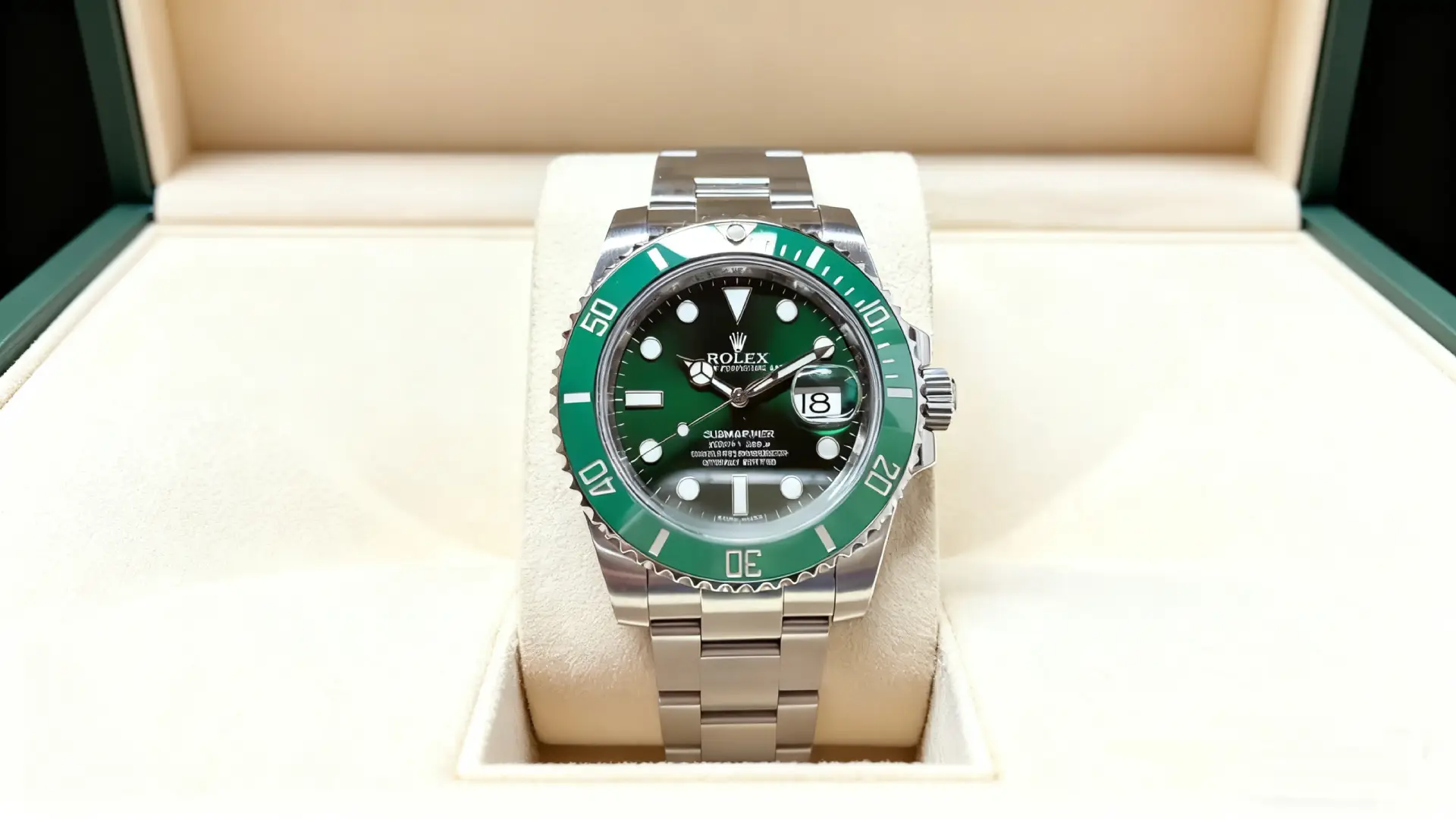Who Created the First Luxury Sports Watch
Watch Guides
2025-09-18

Introduction
As a lifelong watch enthusiast, I’ve always been fascinated by the stories behind iconic timepieces. Among all categories, one question has intrigued me more than any other: Who created the first luxury sports watch? Luxury sports watches are more than just tools to tell time—they are a perfect marriage of craftsmanship, innovation, and elegance. Unlike ordinary sports watches, which focus primarily on functionality, luxury sports watches combine high-end materials (such as precious metals), precise movements, and distinctive designs, fulfilling professional needs while also serving as a symbol of status. Over the years, I’ve explored countless watch collections, read extensive histories, and even visited watch museums, trying to trace the origins of this influential category. Today, I want to take you on my journey through the fascinating world of luxury sports watches, examining their definition, early pioneers, and the designer who truly shaped the genre.
Defining Luxury Sports Watches
Before diving into history, I think it’s important to clarify what we mean by a "luxury sports watch." Unlike ordinary sports watches, which prioritize function over form, luxury sports watches strike a delicate balance between durability, high-quality movement, and sophisticated design. In my experience, a true luxury sports watch has several defining features:
- Durable Materials: Stainless steel, titanium, or precious metals capable of withstanding everyday wear. For example, many luxury sports watches offer water resistance exceeding 300 meters, as seen in the Rolex Submariner series.
- High-End Movements: Mechanical movements, often automatic, that showcase the brand’s horological expertise. Common examples include the ETA 2892 or in-house calibers developed by leading brands.
- Water Resistance: Practical for recreational activities, yet elegant enough for formal occasions.
- Distinctive Design: Unique shapes or bracelets that stand out, yet remain timeless. Sapphire crystal glass and anti-magnetic features are also typical technical configurations that enhance durability.
These features are what separate the luxury sports watch from a standard dive watch or a simple chronograph. In essence, a luxury sports watch is a versatile companion, able to transition from a boardroom meeting to a yacht deck seamlessly. Today, brands also design sports watches for women, offering the same durability and elegance but with proportions and aesthetics tailored to a female audience.

The Origins of Luxury Sports Watches
The 1970s marked a pivotal era in the watch industry—a period defined by experimentation and a rebellion against traditional watchmaking norms. Before this decade, luxury watches were primarily precious metal dress pieces, delicate and reserved for formal occasions. Sports watches did exist, but they were designed as rugged tools for divers, pilots, or military personnel—not as symbols of status or style.
Then came a revolutionary idea: why not combine the robustness of a sports watch with the elegance of haute horlogerie? This concept laid the foundation for what we now recognize as the luxury sports watch.
A major catalyst for this transformation was the rise of quartz watches, which dramatically reshaped consumer expectations. By the mid-1970s, mechanical watches had lost much of their dominance, with global mechanical watch market share dropping from around 80% in 1970 to just 15% by 1975. Quartz watches—and the digital sports watch in particular—were more accurate, affordable, and low-maintenance, prompting consumers to increasingly value practicality and everyday wearability over traditional mechanical craftsmanship.Luxury brands faced a critical challenge: how to maintain appeal and profitability in a market flooded with inexpensive, high-tech alternatives.
In response, Swiss watchmakers began experimenting with blending professional sports functions with luxury elements. For example, brands like Rolex and Omega started integrating robust features—such as diving capabilities in the Submariner and chronograph functionality in the Speedmaster—with premium materials like stainless steel and precious metals. These watches were designed not just for function, but for daily wear by affluent collectors who sought both durability and style.
This era also set the stage for later icons: Audemars Piguet’s Royal Oak (1972) and Patek Philippe’s Nautilus (1976), which took the idea of the luxury sports watch to new heights with bold design, integrated bracelets, and mechanical sophistication. Collectors and historians often debate what truly sparked this transformation: Was it the introduction of stainless steel as a luxury material, or the changing desires of consumers who wanted versatile, stylish watches suitable for both sport and formal occasions? Likely, it was a combination of both—an intersection of market pressure, technological innovation, and design vision that ultimately gave birth to a new watch category.
Key Designers: Gerald Genta
When discussing the origins of the luxury sports watch, one name inevitably stands out: Gerald Genta. Widely regarded as one of the most influential watch designers in history, Genta redefined what a sports watch could be in the 1970s. His genius lay in combining bold aesthetics, mechanical sophistication, and luxury materials in ways that were previously unimaginable.
Genta’s designs were not only functional but also visionary, turning everyday steel watches into status symbols. Two of his creations—the Audemars Piguet Royal Oak and the Patek Philippe Nautilus—are often cited as the defining models of the luxury sports watch category.
Iconic Brands and Their Early Luxury Sports Watches
Audemars Piguet Royal Oak (1972)

The Royal Oak is widely credited as the first true luxury sports watch. Launched in 1972, it was revolutionary for several reasons:
- Designer: Gerald Genta
- Materials: Stainless steel—a daring choice when steel was rarely used in high-end watches
- Design Highlights: Iconic octagonal bezel with exposed screws, integrated bracelet, and “tapisserie” patterned dial
The Royal Oak initially sparked controversy. Its launch price—approximately 3,750 Swiss francs, exceeding that of a contemporary gold Rolex Datejust—was considered exorbitant, and its bold, angular design challenged traditional notions of luxury. Yet, its unique design and stainless steel luxury positioning quickly elevated it to a symbol of status among wealthy collectors. The Royal Oak demonstrated that a sports watch could be both durable and prestigious, setting a new standard for the industry.
Patek Philippe Nautilus (1976)

Just a few years later, Genta designed the Nautilus, which offered a softer, more elegant interpretation of the luxury sports watch.
- Designer: Gerald Genta
- Design Inspiration: Portholes of transatlantic liners
- Design Highlights: Rounded octagonal bezel, integrated bracelet, sleek case
Unlike the Royal Oak, the Nautilus initially attracted a smaller, more selective audience. Its rounded, refined lines and understated elegance appealed to collectors seeking a versatile, sporty yet sophisticated watch. While the Royal Oak quickly became a status symbol among the wealthy, the Nautilus cultivated a reputation for discreet luxury and refined sportiness.
Other Early Luxury Sports Watches

Several other brands contributed to the early development of the luxury sports watch:
- Vacheron Constantin 222 (1977): This model combined a sporty steel case with meticulous finishing, showcasing a balance of robustness and refinement. Its precision craftsmanship and elegant steel design influenced subsequent high-end steel watches, setting a template for understated luxury.
- Girard-Perregaux Laureato (1975): Featuring an octagonal bezel and distinctive aesthetic, the Laureato echoed the emerging trend of steel luxury sports watches. Its geometric design and integrated bracelet inspired later interpretations of sporty elegance across Swiss brands.
- Together, these early models illustrate that the luxury sports watch was not the product of a single invention, but rather a movement across brands, driven by visionary designers, innovative materials, and evolving consumer tastes.
Who Truly Created the First Luxury Sports Watch?
While the question sparks debate among collectors, the Audemars Piguet Royal Oak is widely regarded as the first true luxury sports watch. Its innovation extended beyond design to include timing and market positioning: a stainless steel case symbolizing luxury, an integrated bracelet, and mechanical excellence combined in a package that set the template for the genre.
Although earlier models like the Vacheron Constantin 222 (1977) and Girard-Perregaux Laureato (1975) also explored the concept of luxury sports watches, their market impact was relatively limited. In contrast, the Royal Oak’s bold design, stainless steel prestige, and rapid acceptance among affluent collectors established it as the definitive starting point for the category.
Gerald Genta’s work demonstrated that luxury and sport were not mutually exclusive. The Royal Oak laid the foundation, and subsequent models such as the Patek Philippe Nautilus and other early steel sports watches built upon his vision. For watch enthusiasts, Genta remains not just a designer, but a visionary who anticipated the marriage of sport and luxury long before it became a mainstream trend.

Impact on the Watch Industry
The emergence of the luxury sports watch has had profound and lasting effects on the watch industry—effects that I’ve observed firsthand as both a collector and enthusiast.
Redefining Luxury Materials: Stainless steel became a symbol of prestige, transforming perceptions of what a luxury watch could be. Luxury was no longer confined to gold or platinum; a well-designed steel watch could command status and desirability.
Influencing Watchmaking Craft and Complications: The luxury sports watch also pushed the boundaries of mechanical innovation by combining complex functions with sporty robustness. Chronographs, diving capabilities, and other professional features were integrated into watches that retained elegance and daily wearability. For instance, the Rolex Daytona fused chronograph functionality with impressive water resistance, exemplifying the seamless marriage of utility and luxury.
Shaping Modern Designs: Iconic design elements pioneered by Genta continue to inspire contemporary watchmaking. The Royal Oak’s octagonal bezel and exposed screws have been echoed in models across brands, from the Hublot Big Bang, which draws inspiration from the Royal Oak’s modular, layered case, to IWC’s Ingenieur series, which carries forward the Nautilus’ emphasis on lightweight materials like titanium and sporty elegance.
Impact on Collector Markets: Early luxury sports watches, particularly those designed by Genta, have become highly collectible, commanding significant prices at auctions. They blurred the line between utility and elegance, creating a category that appeals to both connoisseurs and casual buyers alike.
The luxury sports watch was more than a trend—it reshaped materials, design, and mechanical innovation, setting the stage for decades of horological evolution and inspiring countless modern interpretations.
My Personal Perspective
For me, discovering the story behind the first luxury sports watch has been transformative. Owning or even studying these pieces feels like holding history in your hands. The Royal Oak, the Nautilus, and their contemporaries aren’t just watches—they’re symbols of innovation, risk-taking, and artistry.
I’ve often wondered: if Genta had not dared to challenge the norms of his time, would the luxury sports watch exist today as we know it? For collectors like me, understanding the origins of these watches adds a layer of meaning that goes beyond their aesthetic or mechanical appeal.
Conclusion
So, who created the first luxury sports watch? While debates will continue, I firmly believe that the Audemars Piguet Royal Oak, designed by Gerald Genta in 1972, holds that title. It combined robustness, elegance, and mechanical excellence in a way that no watch had before, paving the way for an entirely new category.
Although earlier models such as the Vacheron Constantin 222 (1977) and Girard-Perregaux Laureato (1975) also explored the concept of a luxury sports watch, their market impact was relatively limited. In contrast, the Royal Oak’s stainless steel prestige, integrated design, and rapid acceptance among collectors established it as the definitive starting point for the genre.
Exploring the history of luxury sports watches has been a journey of discovery, and for anyone passionate about watches, understanding their origin enhances both appreciation and collection strategy. Whether you favor the daring Royal Oak, the elegant Patek Philippe Nautilus, or other iconic models, these timepieces remain enduring symbols of innovation and style.
For me, every glance at a Royal Oak or Nautilus is a reminder of Gerald Genta’s genius, the transformative 1970s, and the enduring allure of a truly luxurious sports watch. The legacy of the first luxury sports watch continues to inspire collectors, designers, and enthusiasts alike, and its story will remain a cornerstone of horological history for generations to come.
FAQ
1. What was the first luxury sports watch?
The Audemars Piguet Royal Oak (1972), designed by Gerald Genta.
2. Why was the Royal Oak groundbreaking?
It used stainless steel as luxury, with an integrated bracelet and bold octagonal bezel.
3. Did other early models exist?
Yes—GP Laureato (1975) and VC 222 (1977), but they had less impact.
4. What role did the Nautilus play?
Patek Philippe’s Nautilus (1976) refined Genta’s vision with a softer, elegant design.
5. Why are these watches collectible today?
Their design, history, and rarity make them icons of modern watchmaking.
6. What is the most popular luxury sports watch?
The Rolex Submariner remains the most popular luxury sports watch worldwide.
7. What is the best sport watch brand?
Audemars Piguet, Rolex, and Patek Philippe are often ranked as the best sport watch brands.
8. What are the top 10 luxury watch brands?
Rolex, Patek Philippe, Audemars Piguet, Vacheron Constantin, Omega, IWC, Jaeger-LeCoultre, Cartier, Hublot, and Breitling.
9. What are the “Big 4” in watches?
Rolex, Patek Philippe, Audemars Piguet, and Vacheron Constantin.



